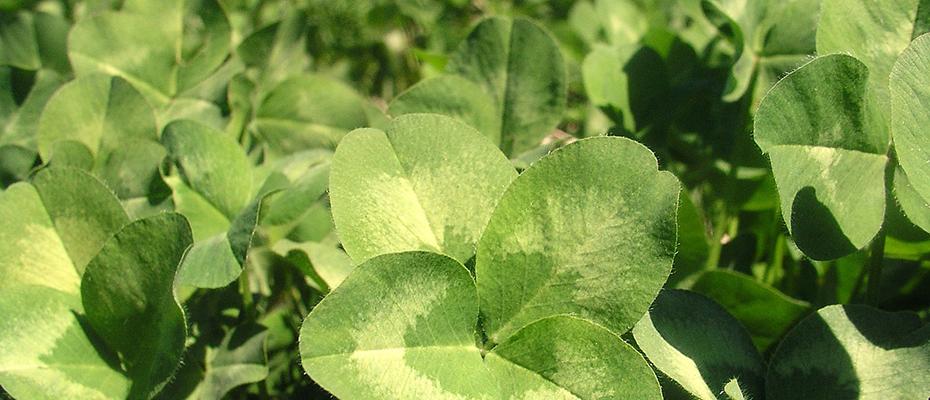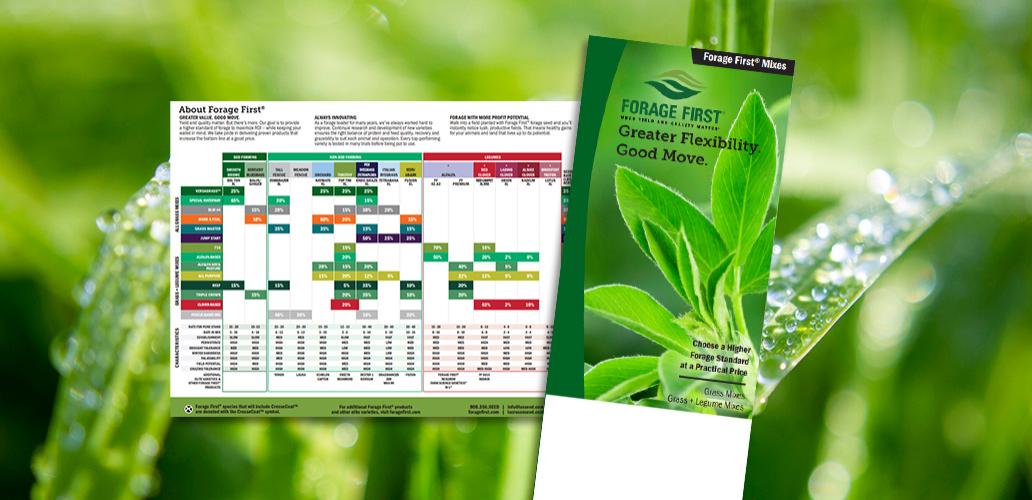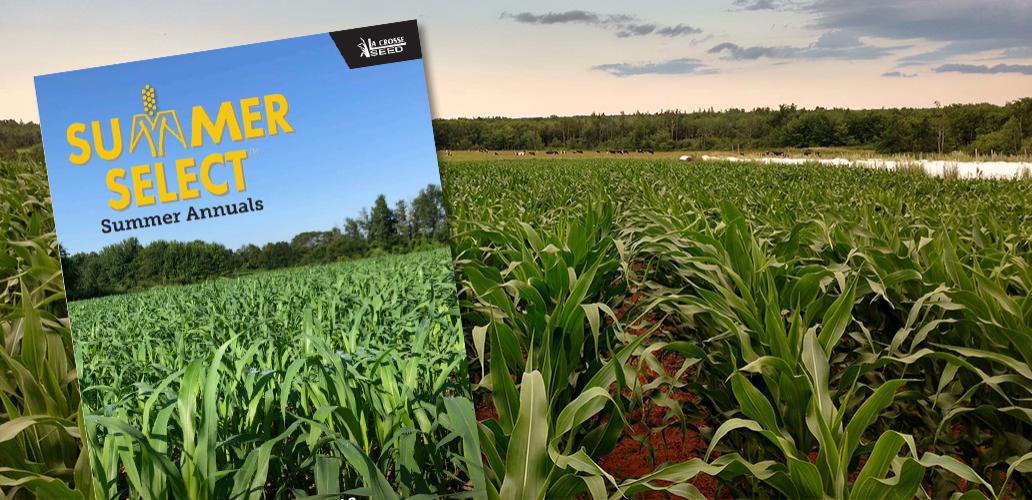Forage First Guide I Summer Select Guide
Greater Value. Good Move. Yield and quality matter. But there’s more. Our goal is to provide a higher standard for forage to maximize ROI– while keeping your wallet in mind. We take pride in delivering proven products that increase the bottom line at a good price.

Forage First Orion XL ladino clover is excellent for pastures and hay, and is widely adapted to different climates. This variety is known for excellent stolon development and establishment, and competes well against weeds. Orion XL’s large leaves are highly nutritious.
CHARACTERISTICS:
Establishment: Fast
Persistence: Medium
Drought Tolerance: Low
Winter Hardiness: Medium
Palatability: High
Yield Potential: Medium
Grazing Tolerance: High
SEEDING:
Seeding Rate:
Alone (lbs./acre): 4-6
Mixes (lbs./acre): 2-4
Seeds/lb.: 768,000
Depth (In.): 1/8-1/4
Planting Time:
Mar.-May; Aug.-Oct.
Emergence (days): 7-10
Life Cycle: Perennial
Soil pH: 6.0-6.5
Adaptation:
White clover thrives best in cool, moist climates on soils with ample lime, phosphate and potash. In general, white clover is best adapted to clay and silt soils in humid and irrigated areas. It grows successfully on sandy soils with a high water table or irrigated droughty soils when adequately fertilized. White clover seldom roots deeper than 2 ft., which makes it adapted to shallow soils when adequate moisture is available.
Establishment:
For pasture establishment, seeds are drilled into a well-prepared seedbed that has been plowed, harrowed and compacted to produce a firm seedbed. The seeds are inoculated before seeding. For stabilization use, seeds are broadcast on roadside cuts and fills by cyclone seeders, hydroseeders or blower-type equipment. The proper time of seeding is determined by seasonal and moisture conditions. This may vary from Apr.-May. Late summer and fall seedings should be conducted while adequate moisture is still in the soil to assure establishment before freezing.
MANAGEMENT:
Management for forage is aimed at maintaining 40-50% clover. Close grazing (2 in. stubble) favors clover, whereas light grazing favors grass. Well-fertilized grass will outgrow clover in fall and winter and may smother clover. Spring nitrogen applications will stimulate grass and provide early feed, but excessive rates are detrimental to clover stand. Phosphate applications are broadcast in fall or spring according to soil tests. Sulfur, boron or magnesium may be needed for maximum production on some soils in western part of clover’s range.
- Large white clover offering increased quality & protein digestibility
- Good regrowth following grazing – tolerates fall usage better than red clover
- Easy to establish
- Superior winter hardiness
- Tolerates low pH soils

.png)
.png)


.png)










